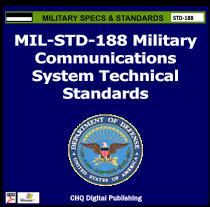Related Research Articles

Radioteletype (RTTY) is a telecommunications system consisting originally of two or more electromechanical teleprinters in different locations connected by radio rather than a wired link. Radioteletype evolved from earlier landline teleprinter operations that began in the mid-1800s. The US Navy Department successfully tested printing telegraphy between an airplane and ground radio station in 1922. Later that year, the Radio Corporation of America successfully tested printing telegraphy via their Chatham, Massachusetts, radio station to the R.M.S. Majestic. Commercial RTTY systems were in active service between San Francisco and Honolulu as early as April 1932 and between San Francisco and New York City by 1934. The US military used radioteletype in the 1930s and expanded this usage during World War II. From the 1980s, teleprinters were replaced by personal computers (PCs) running software to emulate teleprinters.
Automatic Link Establishment, commonly known as ALE, is the worldwide de facto standard for digitally initiating and sustaining HF radio communications. ALE is a feature in an HF communications radio transceiver system that enables the radio station to make contact, or initiate a circuit, between itself and another HF radio station or network of stations. The purpose is to provide a reliable rapid method of calling and connecting during constantly changing HF ionospheric propagation, reception interference, and shared spectrum use of busy or congested HF channels.

MIL-STD-188 is a series of U.S. military standards relating to telecommunications.
In NATO, a standardization agreement defines processes, procedures, terms, and conditions for common military or technical procedures or equipment between the member countries of the alliance. Each NATO state ratifies a STANAG and implements it within its own military. The purpose is to provide common operational and administrative procedures and logistics, so one member nation's military may use the stores and support of another member's military. STANAGs also form the basis for technical interoperability between a wide variety of communication and information systems (CIS) essential for NATO and Allied operations. The Allied Data Publication 34 (ADatP-34) NATO Interoperability Standards and Profiles which is covered by STANAG 5524, maintains a catalogue of relevant information and communication technology standards.

The Joint Tactical Radio System (JTRS) aimed to replace existing radios in the American military with a single set of software-defined radios that could have new frequencies and modes (“waveforms”) added via upload, instead of requiring multiple radio types in ground vehicles, and using circuit board swaps in order to upgrade. JTRS has seen cost overruns and full program restructurings, along with cancellation of some parts of the program.
Link 16 is a military tactical data link network used by NATO members and other nations, as allowed by the MIDS International Program Office (IPO). Its specification is part of the family of Tactical Data Links.
TADIL-J refers to the system of standardized J-series messages which are known by NATO as Link 16. These are defined by U.S. military standard (MIL-STD) 6016. It is used by the U.S. Navy, U.S. Army, U.S. Marine Corps, U.S. Air Force, U.S. Coast Guard, the NSA, several NATO countries, and Japan as part of the Multi-Tactical Data Link Network, a Tactical Data Link.
A United States defense standard, often called a military standard, "MIL-STD", "MIL-SPEC", or (informally) "MilSpecs", is used to help achieve standardization objectives by the U.S. Department of Defense.
Multiple frequency-shift keying (MFSK) is a variation of frequency-shift keying (FSK) that uses more than two frequencies. MFSK is a form of M-ary orthogonal modulation, where each symbol consists of one element from an alphabet of orthogonal waveforms. M, the size of the alphabet, is usually a power of two so that each symbol represents log2M bits.
Link 22 is a secure digital radio link in the HF and UHF bands, primarily used by military forces as a tactical data link.

Operations Specialist is a United States Navy and United States Coast Guard occupational rating. It is a sea duty-intensive rating in the Navy while most of Coast Guard OS's are at ashore Command Centers.

The AN/PRC-150(C) Falcon II Manpack Radio, is a tactical HF-SSB/ VHF-FM manpack radio manufactured by Harris Corporation. It holds an NSA certification for Type 1 encryption. The PRC-150 is the manpack HF radio for the Harris Falcon II family of radios, introduced in the early 2000's.

The AN/PRC-117 translates to "Army/Navy, Portable, Radio, Communication". It is a man-portable, tactical software-defined combat-net radio, manufactured by Harris Corporation, in two different versions:
The Joint Range Extension Applications Protocol (JREAP) enables tactical data messages to be transmitted over long-distance networks, e.g. satellite links, thereby extending the range of Tactical Data Links (TDLs).
Variable Message Format, abbreviated as "VMF" and documented in MIL-STD-6017, is a communications protocol used in communicating tactical military information. A message formatted using VMF can be sent via many communication methods. As it does not define the method, it is not a Tactical Data Link (TDL).
S-TADIL J, or Satellite TADIL J, is a real-time Beyond Line-of-Sight (BLOS) Tactical Digital Information Link (TADIL) supporting the exchange of the same J Series message set that is implemented on Link-16 via the Joint Tactical Information Distribution System (JTIDS). S-TADIL J provides for robust continuous connectivity between Navy ships that are beyond JTIDS line-of-sight (LOS) transmission range. S-TADIL J is designed to support and significantly improve long-range TADIL connectivity between widely dispersed fleet operational forces. With the deployment of S-TADIL J, operational units will have three possible data link paths that can be used to support multi-ship data link-coordinated operations. S-TADIL J supports the same levels of surveillance and weapon coordination data exchange provided by Link-11 and Link-16. The TADIL J message standard is implemented on S-TADIL J to provide for the same level of information content as Link-16.

A tactical data link (TDL) uses a data link standard in order to provide communication via radio waves or cable used by NATO nations. All military C3 systems use standardized TDL to transmit, relay and receive tactical data.

Multifunctional Information Distribution System (MIDS) is the NATO name for the communication component of Link-16.
The Standard Interface for Multiple Platform Link Evaluation (SIMPLE) is a military communications protocol defined in NATO's Standardization Agreement STANAG 5602.
References
- ↑ Friedman, Norman (2016). Fighters over the Fleet: Naval Air Defence from Biplanes to the Cold War. South Yorkshire, United Kingdom: Seaforth Publishing. p. 321. ISBN 978-1-84832-404-6.